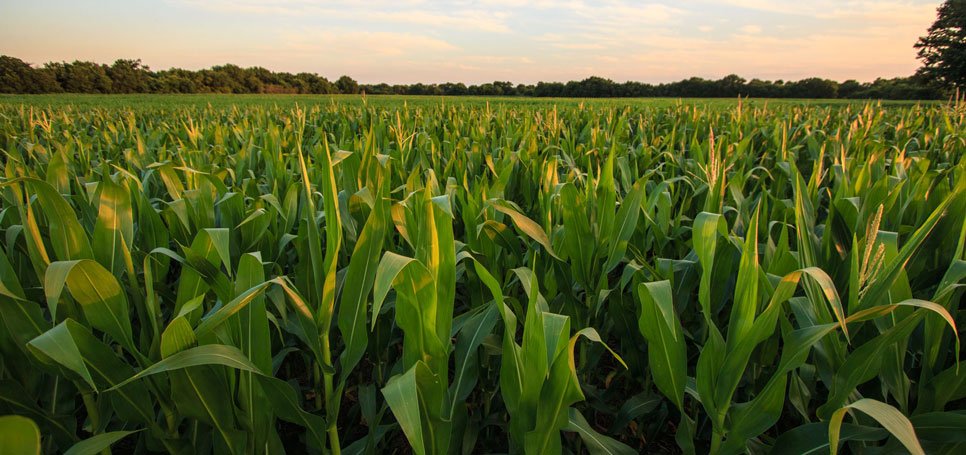
In an opinion piece published yesterday in the Wall Street Journal, Jayson Lusk, Oklahoma State University professor of food and agricultural economics, explains the Vermont genetically modified organism labeling law, the roots of the anti-GMO debate, and the tremendous progress brought by GMOs.
“The small state of Vermont is poised this summer to upend national policy—and it doesn’t have anything to do with Bernie Sanders. Starting July 1, many foods sold in the Green Mountain State must carry a label if they are made with genetically modified ingredients. The law is full of carve-outs: It applies to grocery stores, but not restaurants, and to packaged foods, but not meat or cheese. Nonetheless, it will have nationwide implications. Because food manufacturers may not want to create separate packaging for different regions of the country, or to risk the legal liability if a non-labeled GMO winds up in Vermont, they will probably adjust their supply chains far beyond New England.
“Lawsuits and bills in Congress have attempted to nullify the Vermont measure, but they have been unsuccessful. Those in favor of labeling and those against have tussled over philosophical and legal matters. What is the consumer’s right to know? Can the government compel speech when the best science suggests that GMOs pose no safety risk? Proponents argue that the only cost of labeling is the price of ink. Opponents worry that labeling GMOs will stigmatize them, causing food manufacturers to switch to more expensive non-genetically engineered ingredients.
“Polls do show that 80% or more of consumers support labeling GMOs. But this is a dubious argument in favor, since most know little about the issue. A survey that I conducted on food preferences in January asked more than 1,000 Americans about an absurd hypothetical policy mandating labels for foods containing DNA. Eighty percent supported the idea. A follow-up last February asked another 1,000 people whether they thought that the statement “all vegetables contain DNA” was true or false. More than half, 52%, said “false.” For the record, the correct answer is “true.”
“My research shows that when people are directly asked how they want the issue of GMO labeling to be decided, they do not defer to politicians or their fellow citizens. In a survey last May, a strong majority, 61%, preferred to put the matter to experts at the Food and Drug Administration. This seems to be borne out at the ballot box: To date, referendums on mandatory labeling have been held in five states, and none has passed.
“Lost in the politics is a deeper debate about the future of our food system. At the core of many anti-GMO arguments lies a romantic traditionalism, a desire for food that is purportedly more in line with nature. Perhaps we should eat only the food that God gave us. Yet manna rarely falls from heaven.
“The truth is that what we eat today differs radically from the food eaten even a few hundred years ago. Carrots used to be purple. Random mutations and selective breeding led to their signature color during the 16th century in the Netherlands, where it later was claimed the new varieties honored the King William of Orange. Broccoli, kale, cauliflower and Brussels sprouts all emerged from the same wild plant. Potatoes and tomatoes originated in the Americas and were never eaten in Europe and Asia until after the New World was discovered. Today we eat more and better than ever, precisely because we did not accept only what nature provided.
“Biotechnology has the potential to improve what we eat in a similar manner—if we embrace progress. What is most worrisome about Vermont’s labeling law isn’t the direct costs of labeling; it’s the advance of a food philosophy and a market environment hostile to new crop technologies.
“What innovations will we forego if the risks of investing in research and development are heightened even further by activism and litigation? Many opponents of biotechnology argue that the science has failed to live up to its promise. Yet these same critics seek to block new innovations, such as golden rice, which is genetically engineered to provide vitamin A to malnourished children.
“To appreciate biotechnology, it is only necessary to look around. If you’ve eaten cheese lately or taken insulin, thank a scientist. Cheese-making requires rennet, an enzyme that was once extracted from calf intestines but is now made by genetically modified bacteria or yeast. Insulin used to be drawn from cow pancreases but is now made in a lab by GMO microorganisms. Crops that resist insects and tolerate herbicides have created real benefits for farmers, which are passed along to consumers via lower prices.
“The next generation of innovation is just around the corner: apples that will not brown, potatoes that produce fewer carcinogens when fried, staple crops in the developing world fortified with micronutrients, field crops in the Midwest that require less nitrogen fertilizer.
“Food manufactures today may be reluctant to label foods made using biotechnology. But one day soon, when the fad against GMOs fades, they might be clamoring to add the tag: proudly produced with genetic engineering.”
Find “Can I Get That With Extra GMO?” on the Wall Street Journal website.
